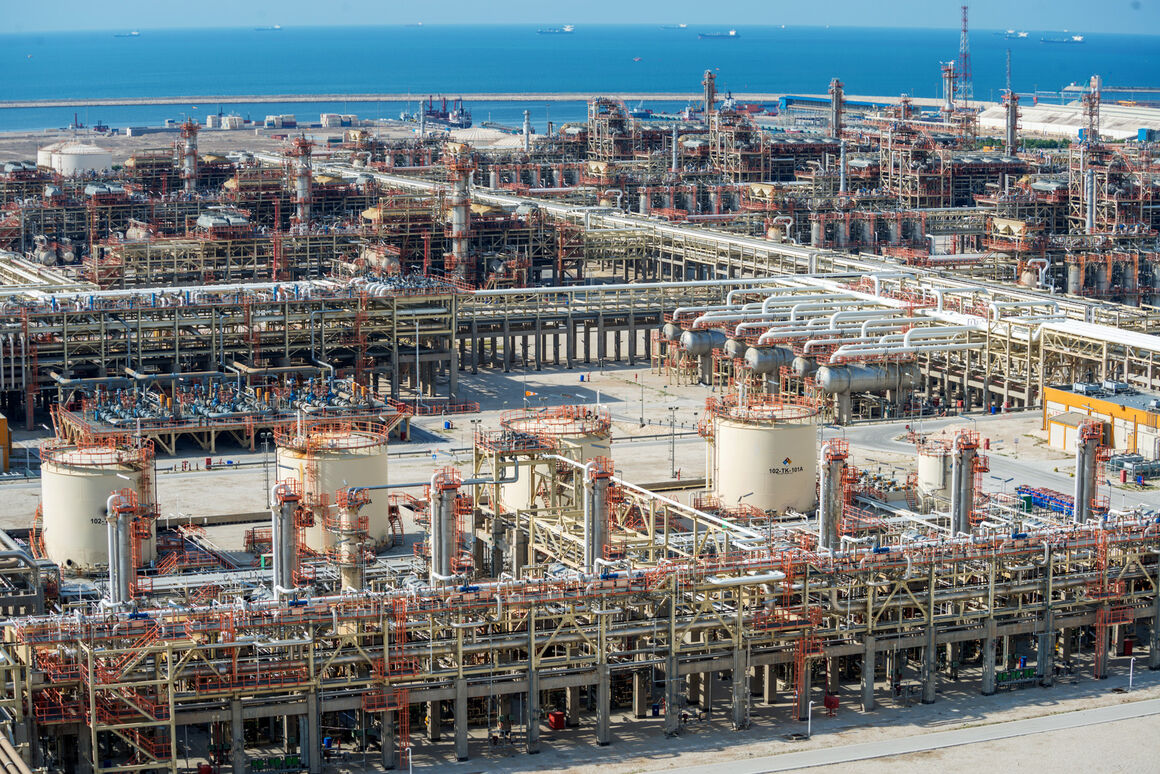Touraj Dehqani emphasized that operations in this field cannot stop for even a second—not during Nowruz holidays, nor any other day or hour. The South Pars field, which produces 700 million cubic meters of gas daily, never shuts down.
South Pars plays a vital role in Iran’s GDP and drives the oil and gas industry, with the annual value of its gas and gas condensates exceeding $100 billion. This figure does not even include the added value from downstream industries like petrochemicals or gasoline production at the Persian Gulf Star Refinery.
Dehqani noted that last winter (1403 in the Persian calendar), a record was broken with 716 million cubic meters of gas extracted in a single day.
He added that the signing of a $17 billion pressure-boosting contract in the final days of the past year, attended by the president, marks a new chapter in gas extraction from this field.
South Pars’ critical role in energy security
Given South Pars’ importance in ensuring Iran’s energy security, what key actions have been taken in this field since the start of the 14th administration?
The country faced exceptional challenges, particularly a harsh winter that arrived earlier and lasted longer than usual. POGC had a crucial responsibility in supplying fuel, which became a national priority.
Today, over 70% of Iran’s gas comes from South Pars, playing a key role in supplying energy for gasoline, households, power plants, major industries, and petrochemical feedstock. Despite the government transition, the new team quickly implemented necessary reforms to prepare for tough conditions.
Record-breaking gas production
Last winter, several records were set in South Pars’ gas production. What was the highest extraction record?
Thanks to extensive efforts, we achieved an unprecedented daily extraction of 716 million cubic meters. We aim to increase this to 730 million this year. Compared to 1402, production rose by at least 10 million cubic meters, with new wells coming online—proving that coordinated, strategic efforts yield results.
Plans to sustain, boost production
Three major initiatives are underway:
1. Completing the "35-month phases" (Phases 13, 14, 19, 20-21, and 22-24) to add 25 million cubic meters to daily output within 20 months.
2. Deploying four new drilling rigs for infill drilling, with 35 new wells planned to boost production.
3. Implementing the $17 billion pressure-boosting project to maintain output as reservoir pressure declines.
Addressing gas imbalance
With a 350 million cubic meter gas shortfall, the company plans to develop new fields like Kish, Farzad, North Pars, and Balal to add 80 million cubic meters in four years.
Nowruz: No breaks for South Pars
Do you and your colleagues take time off for Nowruz?
No—not during Nowruz, nor any other day, night, or hour. Over 1,000 workers are on offshore platforms 24/7, ensuring uninterrupted production.
A message to workforce
"I deeply thank our colleagues, especially those on platforms, whose dedication ensured no gas shortages during the harsh winter. Their resilience inspires us all."
Nowruz greetings
"I wish all colleagues and their families a happy new year. Overcoming challenges requires unity and prioritizing national interests. The 14th administration is committed to a brighter future for Iran."


Your Comment